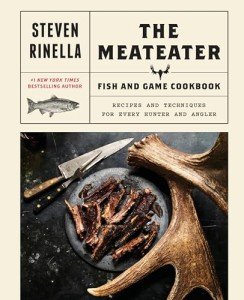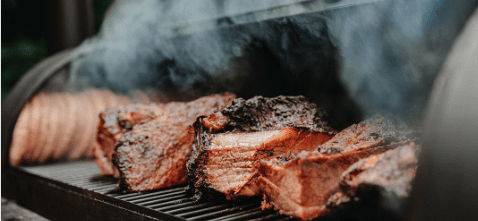When it comes to cooking, there’s a whole world of flavors waiting to be explored. One of the most exciting avenues for adventurous cooks is discovering the rich and diverse flavors of wild game. From game birds like pheasants and quails to larger animals such as deer and elk, the robust tastes they offer can elevate your culinary experience. Embracing The Pleasures Of Wild Game Cooking opens the door to unique recipes and creative culinary techniques that highlight these wonderful ingredients.
Wild game meat often carries a distinct, earthy flavor that sets it apart from traditional meats. This difference in taste comes from the animals' natural diets and more active lifestyles. For instance, venison is known for its rich, slightly sweet flavor, making it an excellent choice for hearty stews and roasts. On the other hand, waterfowl such as duck possess a flavorful, fatty profile that lends itself beautifully to grilling or pan-searing. Understanding the nuances of these flavors can turn your cooking into a delightful exploration of regional and seasonal dishes.
Along with understanding the taste profiles, ingredients and seasonings can play a vital role in enhancing the natural flavors of wild game. Common pairings include robust herbs like rosemary and thyme, as well as fruits like cranberries or apples that can bring out the sweetness in the meat. Experimenting with marinades or sauces, such as a red wine reduction or a berry compote, can further enhance The Pleasures Of Wild Game Cooking and create layers of flavor that will surprise and delight your palate.
Another appeal of cooking wild game is the sense of adventure that comes with it. Sourcing your ingredients can also become a thrilling journey, whether it’s from a local butcher specializing in game meats or even a successful hunting expedition. With each dish you prepare, you not only embrace the unique flavors of wild game but also engage in a cooking experience that connects you to nature and to the food you eat. This combination of taste and adventure is what makes wild game cooking so compelling.
Essential Cooking Techniques for Game
When diving into the world of wild game cooking, mastering some essential techniques can elevate your culinary experience. The right methods not only enhance the natural flavors of the meat but also ensure that each dish is tender and delicious. Understanding how to properly prepare wild game will unlock the true pleasures of wild game cooking, transforming your meals into memorable feasts.
One of the most important techniques is proper meat preparation. Wild game often has a stronger flavor compared to domestic meats. Begin by trimming any excess fat and sinew, as these can lead to a gamey taste that may not appeal to everyone. Marinating the meat is also a great way to infuse flavors and tenderize tougher cuts. Use a marinade with acidic components, like vinegar or citrus, combined with herbs and spices that complement the unique taste of the game.
Cooking methods also play a vital role in preserving the quality of wild game. Grilling and roasting are popular options, especially for cuts like venison steaks or game birds. These methods allow for a beautiful caramelization on the outside while keeping the inside juicy. Slow cooking is another technique worth mastering, as it breaks down tougher fibers in meats like wild boar or elk, resulting in tender, flavorful dishes. Don’t forget to monitor the internal temperature closely, as wild game can dry out quickly if overcooked.
Finally, the art of seasoning cannot be overlooked. Since the flavor of wild game is distinct, it’s essential to balance it with the right herbs and spices. Thyme, rosemary, juniper berries, and garlic pair beautifully with game meats. Experiment with different combinations to find what works best for your palate. Remember, the goal is to enhance the meat’s natural flavors, not overpower them. By honing these essential cooking techniques, you’ll truly enjoy the pleasures of wild game cooking, delivering exquisite meals that impress family and friends alike.
Perfect Pairings for Wild Game Dishes
When it comes to the pleasures of wild game cooking, the right pairing can elevate your dish from just a meal to an unforgettable dining experience. Wild game, with its rich and robust flavors, deserves side dishes and beverages that complement its unique taste. Whether you're serving venison, duck, or wild boar, consider these perfect pairings to enhance your culinary adventure.
One classic choice for wild game is a hearty, earthy side like roasted root vegetables. Carrots, parsnips, and beets bring a touch of sweetness that balances the gamey flavors. Alternatively, a wild rice pilaf with nuts and dried fruits adds a lovely texture and a burst of flavor that pairs beautifully with game meats. The combination of these sides not only complements the dish but also adds a colorful presentation to your table.
Don’t forget about the beverages! A full-bodied red wine, like a Cabernet Sauvignon or a Zinfandel, can be a fantastic match for richer meats. For lighter options like rabbit or pheasant, consider a crisp Riesling or a light-bodied Pinot Noir, which can enhance the flavors without overwhelming the palate. If you prefer something less traditional, a craft beer with hoppy notes can also provide a delightful contrast to the savory elements of wild game dishes.
Finally, garnishes and sauces play a crucial role in tying all the flavors together. A berry-based sauce, such as a raspberry or blueberry reduction, adds a tart sweetness that contrasts wonderfully with the heartiness of the game. Fresh herbs like rosemary or thyme can also bring brightness and complexity to the dish, making every bite a delight. These thoughtful pairings take the pleasures of wild game cooking and turn them into an extraordinary culinary celebration.
Tips for Safe and Sustainable Cooking
When diving into the world of wild game cooking, it’s essential to embrace safe and sustainable practices. First and foremost, ensure that the meat you use is sourced legally and responsibly. This not only supports conservation efforts but also protects the natural habitat. For those new to hunting, consider joining a local hunting club where experienced members can provide guidance on best practices and sustainable hunting regulations.
Another important tip for safe cooking is proper handling of the meat. Always wash your hands and any surfaces that come into contact with raw meat to prevent cross-contamination. Use separate cutting boards and utensils for wild game to maintain kitchen hygiene. Given the distinct flavors and textures characteristic of wild game, be sure to cook it thoroughly, following recommended safe cooking temperatures to ensure the meat is both delicious and safe to eat.
Incorporating sustainable cooking practices is also vital when exploring the pleasures of wild game cooking. Consider utilizing the entire animal, from the meat to the bones, in creating stocks or broths. This not only reduces waste but also adds depth and flavor to your dishes. Lastly, try to grow your own herbs and vegetables to complement your wild game meals. This not only supports local agriculture but also enhances your dishes with fresh, vibrant flavors.





